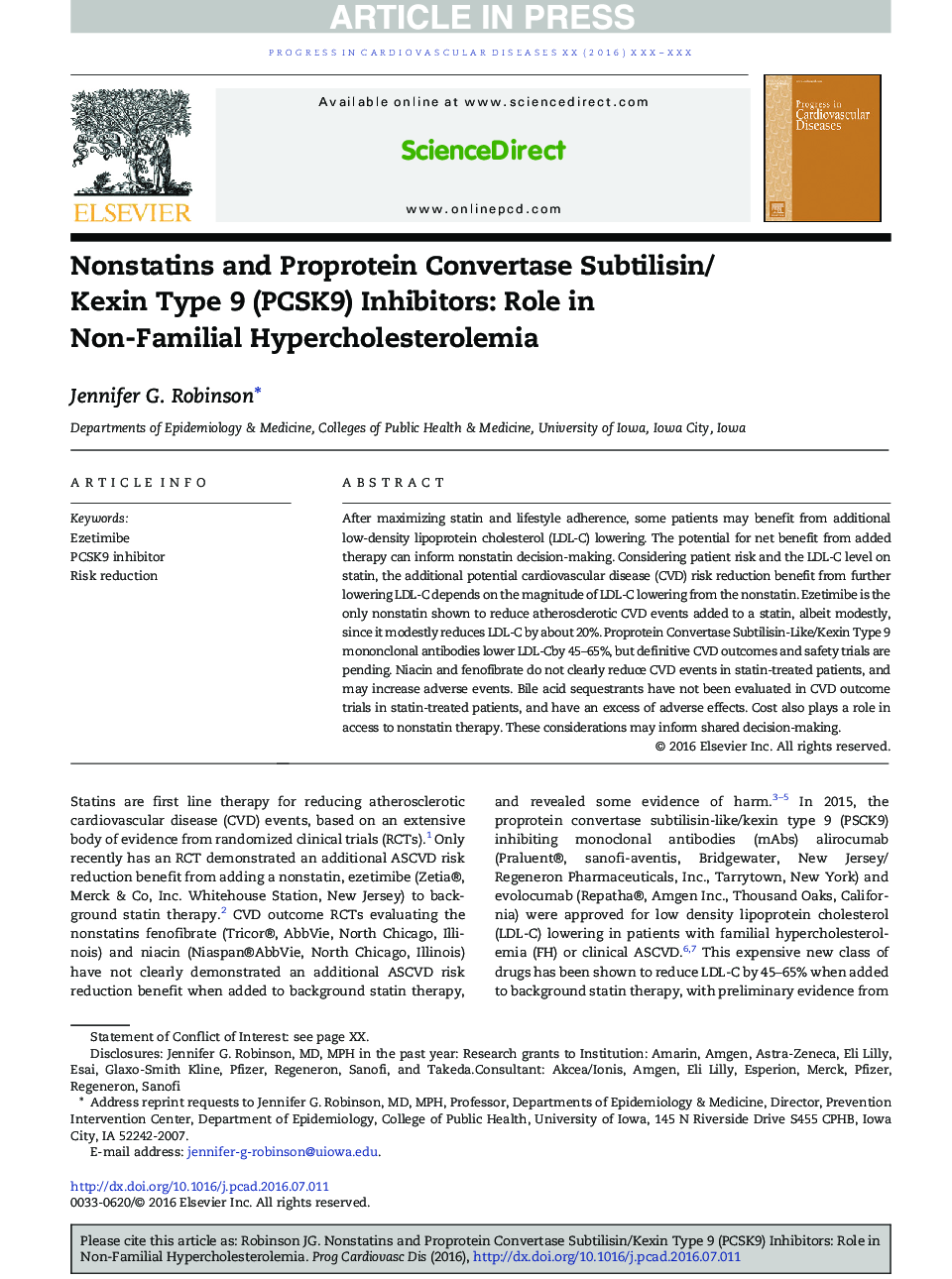| Article ID | Journal | Published Year | Pages | File Type |
|---|---|---|---|---|
| 5619644 | Progress in Cardiovascular Diseases | 2016 | 7 Pages |
Abstract
After maximizing statin and lifestyle adherence, some patients may benefit from additional low-density lipoprotein cholesterol (LDL-C) lowering. The potential for net benefit from added therapy can inform nonstatin decision-making. Considering patient risk and the LDL-C level on statin, the additional potential cardiovascular disease (CVD) risk reduction benefit from further lowering LDL-C depends on the magnitude of LDL-C lowering from the nonstatin. Ezetimibe is the only nonstatin shown to reduce atherosclerotic CVD events added to a statin, albeit modestly, since it modestly reduces LDL-C by about 20%. Proprotein Convertase Subtilisin-Like/Kexin Type 9 mononclonal antibodies lower LDL-Cby 45-65%, but definitive CVD outcomes and safety trials are pending. Niacin and fenofibrate do not clearly reduce CVD events in statin-treated patients, and may increase adverse events. Bile acid sequestrants have not been evaluated in CVD outcome trials in statin-treated patients, and have an excess of adverse effects. Cost also plays a role in access to nonstatin therapy. These considerations may inform shared decision-making.
Keywords
PCSK9 inhibitormAbsLDL-CHDL-CNNTASCVDRCTPCSK9NNHRandomized controlled trialEzetimibecardiovascular diseaseAtherosclerotic cardiovascular diseasetriglycerideDiabetes mellitusCVDNumber needed to harmnumber needed to treathigh-density lipoprotein cholesterolFamilial hypercholesterolemiaMonoclonal antibodiesrisk reductionLow-density lipoprotein cholesterol
Related Topics
Health Sciences
Medicine and Dentistry
Cardiology and Cardiovascular Medicine
Authors
Jennifer G. Robinson,
